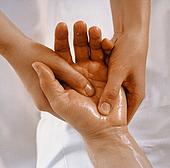Although you do not want to hear this, but it might be necessary to pulling a tooth.
Reasons for a tooth extraction
Bad dental health, which can lead to decay, is the biggest reason why a dentist might extract a tooth. Either way the tooth will be at such a state that it is impossible to repair.
If your tooth is badly damaged or there are decay, meaning the center of the tooth that houses the nerves and blood vessels is infected with bacteria you will have a choice, to do a root canal or pull the tooth. If the antibiotics or the root canal fails to cure your problem, then tooth extraction is the answer to prevent the infection to spread. In addition, gum disease can loosen a tooth, resulting it being pulled.
There are other reasons why a dentist may want to pull your teeth.
The goal of orthodontics is to have your teeth perfectly aligned. If your teeth are overcrowded, your teeth will not align correctly. Your dentist might pull some teeth to make space.
In addition, after treatments like chemotherapy or organ transplant, where the immune systems has been compromised, there can be a risk for a dental infection. If there is an infection, the tooth might be pulled.
The procedure of a tooth extraction
Firstly, after a proper examination and a consult to discuss alternatives options, and how to cover the extraction, your dentist will inject a local anesthetic to numb the area where the tooth will be extracted.
The dentist will then cut the gum away from the tooth. The tooth will then be loosen from the jawbone and ligaments that holds it in place. If the dentist is lucky, all that is needed is a hard pull. But let’s be real, that does not happen every time. Then the tooth will be removed in pieces.

Recovery
The total recovery time can take about one to two weeks. During this time, new bone and gum tissue will grow to fill the gap where the tooth has been pulled.
But directly after the extraction a blood clot will form in the socket where the tooth the dentist pulled the tooth. A gauze pad will placed in the socket and you will need to bite down on it. This biting action will aid stopping the bleeding. Alternatively, self-dissolving stitches might be needed.
At home, and when you are sleeping, elevate your head with extra pillows. This will help to reduce the bleeding.
Things you can do to ease the healing:
Besides experiencing bleeding from where the tooth has been pulled, you might also experience some pain. To ease the pain use painkillers. Ask your dentist to give you are a prescription of a brand that you can use. Then again, there might also be some swelling. You can apply an ice pack every 10 minutes. This will reduce the swelling. But most important, relax. You will need to relax for about 24 hours. Just remember that for a day or two, depending on how your body reacts, you will need to limit your activities while the socket heals.
Other things you should keep in mind is not to rinse your mouth for 24 hours post your procedure. However, after 24 hours you can rinse your mouth out with a solution of half a teaspoon of salt and eight ounces of water.
Also avoid using straws as they could damage the socket and cause bleeding.
As for eating, have soft but healthy food like soups and yogurts. Then slowly start to add solids to your diet.
Complications
It is normally very safe to have teeth pulled. But bacteria could enter the into the bloodstream. This could also place your gums at risk. If you high risk of a bacterial infections, then you should use antibiotics before and after tooth extraction.
If the blood clot in the socket breaks loose, the bone in the socket will be exposed. This is called a dry socket, which is extremely painful.
In the long term, you might have a problem developing as your teeth start to move. This can affect your bite and make it difficult for you to chew your food.
Your dentist can suggest solutions to fill this gap, such as replacing the missing teeth with implants, a fixed bridge or partial dentures.




